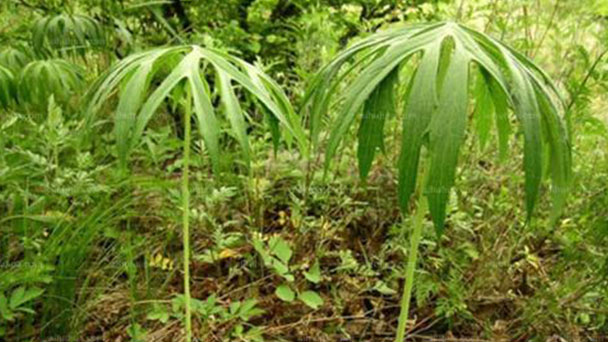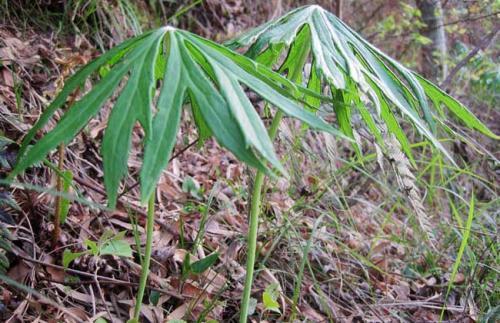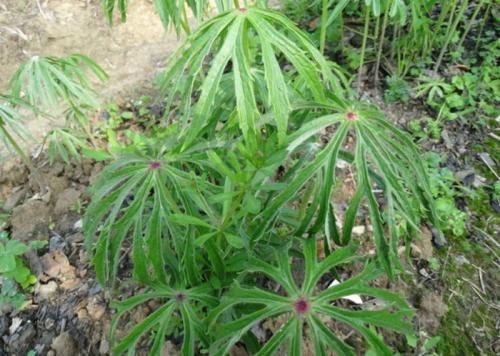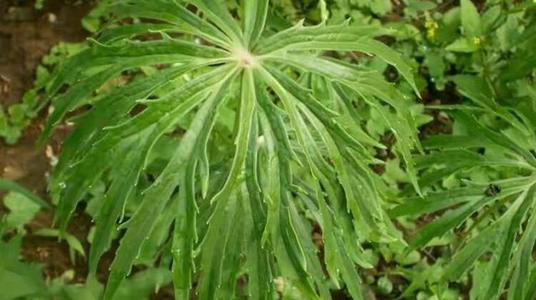Syneilesis aconitifolia (shredded umbrella plant) plant
Written by Maggie
Mar 10 2021

Syneilesis aconitifolia, also called shredded umbrella plant, is the root or whole plant of the composite family Syneilesis aconitifolia. In the autumn, take and remove the soil after drying. Syneilesis aconitifolia can detoxify and promote blood circulation, reduce swelling and relieve pain.
Syneilesis aconitifolia picture

Syneilesis aconitifolia info
| Botanical Name | Syneilesis aconitifolia |
| Common Names | shredded umbrella plant |
| Plant Type | Herbaceous perennial |
| Sun | Part shade to full shade |
| Hardiness Zones | 4 to 8 |
| Tolerate | Drought |
| Native Range | Central and eastern temperate Asia |
| Mature size | 1.50 to 3.00 feet high, 1.50 to 2.00 feet wide |
Morphological characteristics of Syneilesis aconitifolia
Rhizome
Syneilesis aconitifolia is a perennial herb, 70 -- 120cm tall. Rhizome is creeping. Stem is erect, simple, glabrous, slightly brownish.
Leaf
Root leaves of Syneilesis aconitifolia 1, umbellate, pendant when young. Cauline leaves are alternate; Petiole is 2-16cm long; Leaf blade is oblong-peltate, palmately divided, reaching to the center, lobes again pinnately divided, lobed to 4 -- 9, margin irregularly sharp teeth, glabrous, green above, grayish below. Lower leaf diameter of syneilesis aconitifolia is 20-30cm, petiole length 10-16cm; syneilesis aconitifolia has 7-9 lobes. Upper leaves are small, 12 -- 24cm in diameter, petioles 2 -- 6cm long, lobes 4 -- 6.
Flowers
Inflorescences of Syneilesis aconitifolia are numerous, densely complex corymbiform, terminal, pedicels 5 -- 16mm long, base with striate bracts; Involucral bracts 1 layer, 5, glabrous, oblong, apex obtuse, margin membranous, 9 -- 12mm long; Involucral bracts are cylindric; Flowers are bisexual, 8-11, corolla tubular ca. 1cm, apex 5-lobed, stamens 5-lobed, with corolla tubes; Ovary of Syneilesis aconitifolia is inferior, 1-loculed; Style is slender, stigma 2-lobed.
Fruit
Achene of Syneilesis aconitifolia is cylindrical, 5 -- 6mm long, longitudinally striated; The crested hairs are grayish white or reddish brown.
The ecological habits of Syneilesis Aconitifolia
Syneilesis Aconitifolia likes warm, humid and sunny environments, and is resistant to semi-shade, cold and poor. The suitable temperature for growth is 15℃ ~ 22 °C. Do not choose soil, with loose, fertile loam is better.
Propagation of Syneilesis aconitifolia
Syneilesis aconitifolia can be propagated from seed and sown in autumn and spring. Autumn sowing from the seeds after the harvest to early November until the ground frozen, autumn sowing the next year began to germinate in early April, in late April to early May out of the seedlings. Spring sowing from March to early April, the seedlings from late April to early May. Spring sowing seeds must be low temperature treatment, so that the embryo development mature, if the seeds will be more dry sowing, that year no seedlings. Sowing method is divided into two kinds: strip method and spread method.

Disease control of Syneilesis aconitifolia
Disease control
Root rot
Root rot occurs in high temperature or rainy seasons. The roots rot, and the stems and leaves above the ground wither.
Prevention and control methods:
Timely drainage after rain.
Remove the diseased plant and burn it, and disinfect the diseased point with lime powder.
(Irrigate the sick point with 1% ferrous sulfate for disinfection.
Leaf spot
Damage to leaves, forming irregular disease spots on the leaves.
Prevention and control methods:
Pulling out the diseased plant in time.
Use 1:1:100 times Bordeaux solution for control.
Pest control
The pests of Syneilesis Aconitifolia include grubs, mole crickets, ground worms and weevils, which can be killed artificially or by poison baits
The distribution region of Syneilesis aconitifolia
Syneilesis Aconitifolia is distributed in Northeast China, North China and East China.

Latest Updated
- Benefits of Bugleweed - 7 Science-backed Health Benefits
- Bugleweed Dangers & Side Effects - Is It Poisonous?
- How to Plant Evergreen Trees - What You Should Know
- When to Plant Evergreens - Grow Guide for Evergreen Trees
- 12 Wonderful Evergreen Shrubs for Your Garden
- 12 Popular Evergreen Plants with Pictures for Beginners
- When And How To Prune A Lilac Bush Like a Pro
- How to Grow & Care for Lilac Vine (Hardenbergia Violacea)
- Japanese Lilac Tree (Syringa Reticulata) Care & Propagation Guide
- Shumard Oak Pros and Cons - What to Know
Popular Articles
- Winter maintenance of Antirrhinum Majus
- How to Grow Terminalia Mantaly Tree
- How to Grow and Care for Crossostephium Chinense
- How to grow Antirrhinum Majus in spring
- Peristeria Elata (Dove Orchid) Profile: Info & Care Guide
- Underwatered Snake Plant (Sansevieria Trifasciata) - Signs And How To Fix
- How to Care for Brazilian Jasmine Plant (Mandevilla Sanderi)
- How to Grow & Care for Graptopetalum Purple Delight in Summer
- Rosa Chinensis (China Rose): Plant Growing & Care Tips
- How to Care for Baby Sun Rose (Aptenia Cordifolia)